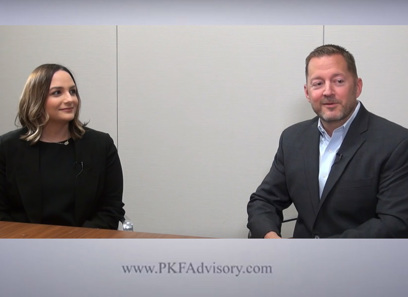M&A Outlook: How Emerging Market Opportunities Are Impacting the Global Landscape
M&A Outlook: How Emerging Market Opportunities Are Impacting the Global Landscape
Blog Article
Exploring the Economic and legal Facets of Mergers and Acquisitions Deals

Overview of Mergers and Acquisitions
Mergers and acquisitions (M&A) stand for a substantial segment of corporate strategy, with plenty of transactions happening internationally each year. These strategic maneuvers are primarily targeted at enhancing competitive benefit, expanding market share, and accomplishing functional harmonies. M&A tasks normally come under two distinctive categories: mergers, where two business combine to form a new entity, and procurements, where one firm purchases one more, hence preserving its identity.
The motivations behind M&A purchases are differed. Firms may go after these approaches to diversify their item offerings, go into brand-new markets, or take advantage of technical improvements (Economic factors influencing M&A). Additionally, M&A can function as a means to get rid of competitors or get to valuable intellectual home
The process of M&An includes several phases, consisting of target identification, evaluation, arrangement, and combination. Successful purchases call for comprehensive due diligence to analyze economic health and wellness, functional capabilities, and possible liabilities of the target firm.
Lawful Structure and Conformity
Understanding the lawful structure and compliance demands surrounding mergers and procurements is essential for navigating the intricacies of these transactions - Economic factors influencing M&A. These procedures are controlled by a myriad of laws at both federal and state degrees, which intend to ensure fair competition, shield stakeholders, and copyright company governance requirements
Trick regulatory bodies, such as the Federal Profession Payment (FTC) and the Stocks and Exchange Compensation (SEC), impose antitrust regulations and safety and securities laws, respectively. Business have to conduct complete due diligence to recognize any type of possible legal challenges, including anti-competitive issues or regulative approvals essential for an effective transaction.
Additionally, conformity with disclosure obligations is critical, especially when public companies are included. This includes filing required documentation and giving accurate info to investors and regulative authorities.
Cross-border M&A transactions introduce extra layers of complexity, as differing legal criteria and governing frameworks have to be browsed. Engaging legal guidance with expertise in procurements and mergers is essential to guarantee adherence to appropriate legislations and to alleviate risks. Thus, understanding these legal structures not just facilitates compliance however additionally boosts the likelihood of a effective and effective merger or purchase.
Financial Appraisal Techniques

Amongst one of the most typical strategies are the Discounted Capital (DCF) analysis, which estimates today value of expected future capital, and the Similar Business Evaluation (CCA), which evaluates a firm's value loved one to comparable firms within the Recommended Reading very same industry (Economic factors influencing M&A). Additionally, Precedent Transactions Analysis (PTA) examines historical acquisition information to establish benchmarks for assessment
Another substantial approach is the Asset-Based Valuation, which focuses on the firm's internet asset value, offering a tangible assessment of worth by thinking about both present and long-term possessions and responsibilities. Each method has its limitations and toughness, usually varying in applicability depending on the nature of the industry and the company context.
Ultimately, employing a mix of these economic assessment strategies can yield a comprehensive understanding of a firm's worth, helping to make sure that both buyers and sellers participate in equitable and reasonable transactions throughout the intricate procedure of mergings and purchases.
Due Diligence Refine
Performing extensive due diligence is important to discovering important information about a target business before settling a merging or acquisition. This procedure involves a detailed evaluation of the target's economic, operational, legal, and governing elements. The key aim is to determine potential risks and liabilities that might affect the purchase's worth or post-merger efficiency.

In addition, cultural due persistance examines the compatibility of the merging entities' corporate societies, which is critical for a successful combination. The due diligence procedure needs collaboration among numerous stakeholders, including lawful advice, financial consultants, and market professionals, to ensure an alternative understanding of the target company.
Inevitably, the findings from due persistance notify settlement strategies and may bring about changes in the purchase cost or imp source terms, therefore safeguarding the rate of interests of the getting party and preparing for an effective merging or procurement.
Post-Merger Combination Obstacles
While effective mergings and procurements commonly create significant harmonies and growth chances, the post-merger combination stage offers a myriad of challenges that can undermine these advantages. One of the leading issues is the social assimilation of the combining entities. Diverse corporate cultures can result in employee resistance, decreased spirits, and inevitably, ability attrition. Developing a unified company identity is vital to alleviate these dangers.
An additional significant obstacle hinges on lining up procedures and systems. The combination of inconsonant IT systems, operational techniques, and monetary coverage can be time-consuming and complex, typically leading to operational disruptions. Furthermore, the failing to communicate properly during this phase can result in confusion and misinformation amongst employees, customers, and stakeholders.
Financial integration additionally presents obstacles, particularly in integrating financial plans and accountancy methods. This imbalance can result in disparities in monetary reporting, influencing stakeholder confidence and market understanding.
Finally, governing compliance issues might emerge, demanding precise attention to lawful demands. Attending to these challenges immediately and purposefully is crucial for recognizing the anticipated benefits of a merging or acquisition, guaranteeing long-lasting success and security.
Conclusion
In conclusion, the intricate landscape of mergings and acquisitions necessitates a comprehensive understanding of both lawful and economic aspects. Adherence to governing structures makes sure compliance and minimizes anti-competitive risks, while robust economic appraisal strategies supply critical understandings right into firm worth.
The elaborate landscape of procurements and mergings purchases requires a comprehensive understanding of both legal structures and economic appraisal techniques. Regulatory bodies, such as the FTC and SEC, enforce rigid compliance needs to protect against anti-competitive habits, while durable monetary evaluation techniques are necessary for precisely evaluating a company's worth. Successful purchases need complete due persistance to assess economic health and wellness, functional abilities, and potential responsibilities of the target firm.Financial due diligence checks out historical and projected financial declarations, cash his comment is here money circulation analysis, and tax conformity. Adherence to regulative frameworks makes sure compliance and alleviates anti-competitive threats, while robust monetary evaluation methods give crucial insights right into firm worth.
Report this page